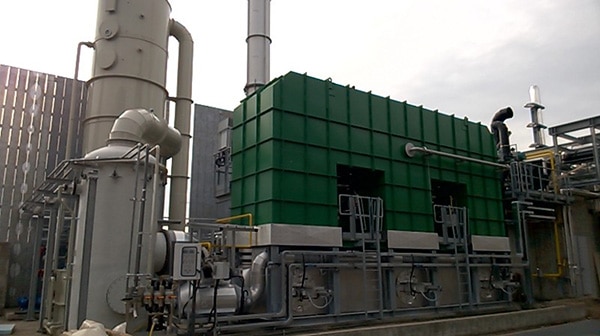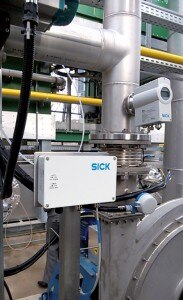Regenerative Thermal Oxidation (RTO) systems use combustion to remove harmful gas components from exhaust air, the majority of these being pollutants resulting from corrosive components in chemical processes. It is also particularly important that hazardous air in landfill sites and solvent-containing emissions in paint shops are treated. Regardless of the location or the substance being treated, environmental regulations are one of many challenges to be faced. SICK's oxygen transmitter triumphs over paramagnetic measuring in airprotech's RTO systems, with the arguments in favor of the TRANSIC151LP speaking for themselves.  For the past 25 years, the Italian company airprotech has been hard at work designing and manufacturing innovative exhaust air cleaning systems for a wide range of industry branches. The companys technology ensures compliance with emission levels prescribed by law, and the efficient use of thermal energy makes it possible to significantly reduce operating costs. The fact that the thermal efficiency sometimes reaches up to 97% ‒ thanks to the regenerative transfer of heat ‒ is of particular interest from a financial standpoint.
For the past 25 years, the Italian company airprotech has been hard at work designing and manufacturing innovative exhaust air cleaning systems for a wide range of industry branches. The companys technology ensures compliance with emission levels prescribed by law, and the efficient use of thermal energy makes it possible to significantly reduce operating costs. The fact that the thermal efficiency sometimes reaches up to 97% ‒ thanks to the regenerative transfer of heat ‒ is of particular interest from a financial standpoint.
Oxygen measurement is a necessity
Gases to be cleaned are generally heated up in a ceramic bed before being transferred to the furnace. In this application, however, it is a highly reactive gas from a reactor that needs to be treated, so it is passed directly into the combustion chamber, where it burns without leaving any residues. To avoid dangerous conditions, the oxygen in the air being supplied to the RTO system must not exceed the limiting oxygen concentration (LOC). Until now, airprotech has used paramagnetic oxygen measuring devices, to varying degrees of success. The changing process conditions, affected by pressure, temperature and flow, influence the accuracy of measurements, making them unreliable. Furthermore, this type of analyzer measures extractively, which means that the gas needs to be filtered and cooled before measurement can be carried out. This results in higher purchasing costs for airprotech, and higher maintenance costs for the end customers.
 TRANSIC151LP in use. The laser measurement technology used in SICKs TRANSIC151LP is much less susceptible to these influencing factors. Laser spectroscopy - a technology that was previously more likely to be found within the world of high-tech analysis - is now being used in this field instrument, providing a solution for this challenging oxygen measurement application. TRANSIC measures without any difficulties, even when faced with uneven flow rates, vibrations, and fluctuations in pressure. There is a filter in place to protect the measurement optics, but if these do become contaminated, the customer himself can simply give the device a quick clean. The compactness of the TRANSIC151LP allows it to be easily incorporated into airprotech's RTO systems with very little effort; it just needs to be screwed into the gas feed line and measuring can commence. There is no need for alignment, because the optics are installed in a fixed position. The signal is analog, ranging between 4 and 20 mA, and the intrinsically safe transmitter can even be operated directly in a hazardous zone. And last but not least, this oxygen transmitter comes with a price tag which is just as attractive as its reliable measurement technology.
TRANSIC151LP in use. The laser measurement technology used in SICKs TRANSIC151LP is much less susceptible to these influencing factors. Laser spectroscopy - a technology that was previously more likely to be found within the world of high-tech analysis - is now being used in this field instrument, providing a solution for this challenging oxygen measurement application. TRANSIC measures without any difficulties, even when faced with uneven flow rates, vibrations, and fluctuations in pressure. There is a filter in place to protect the measurement optics, but if these do become contaminated, the customer himself can simply give the device a quick clean. The compactness of the TRANSIC151LP allows it to be easily incorporated into airprotech's RTO systems with very little effort; it just needs to be screwed into the gas feed line and measuring can commence. There is no need for alignment, because the optics are installed in a fixed position. The signal is analog, ranging between 4 and 20 mA, and the intrinsically safe transmitter can even be operated directly in a hazardous zone. And last but not least, this oxygen transmitter comes with a price tag which is just as attractive as its reliable measurement technology.
- Product informationen: TRANSIC151LP gas transmitter
- Product portfolio: Gas analyzers

